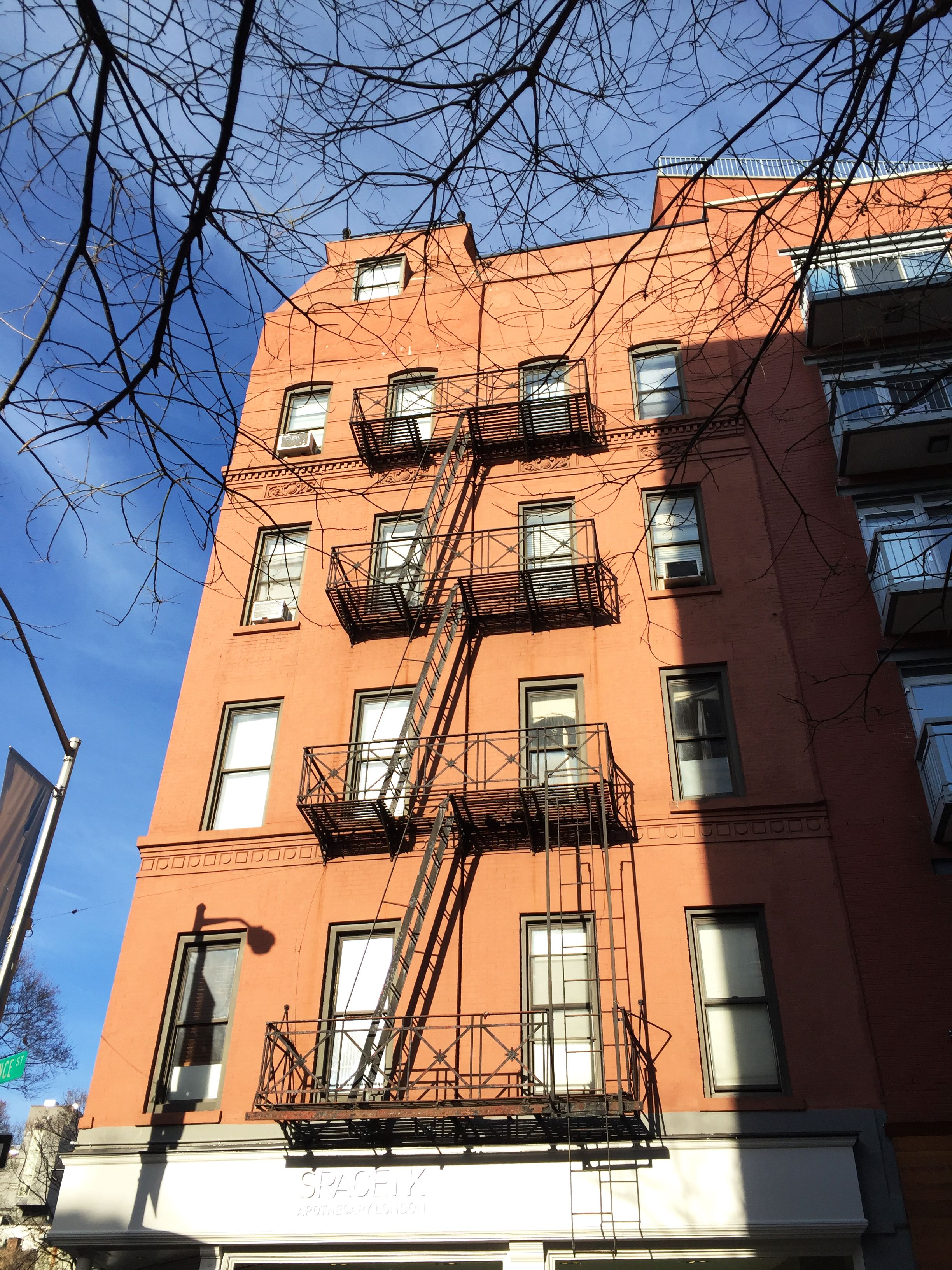In the reading, “Iron Ivory” by Thomas A. P. Van Leeuwen, the narrator explains the history of fire escapes. He also goes on to describe the structural evolution of the system and the various designs that advanced over the years. It was mentioned in the article that many buildings had gotten rid of their fire escapes over the years, but in certain areas such as Chinatown many of them remained in tact. I took a trip to SoHo, which is only a few blocks from Chinatown, to look for buildings with fire escapes. All the fire escapes I came across were similar in their construction in that they were all made of thin sections of metal, iron, that were connected together. Every fire escape I came across was painted, oftentimes black, but I did see some that were white.
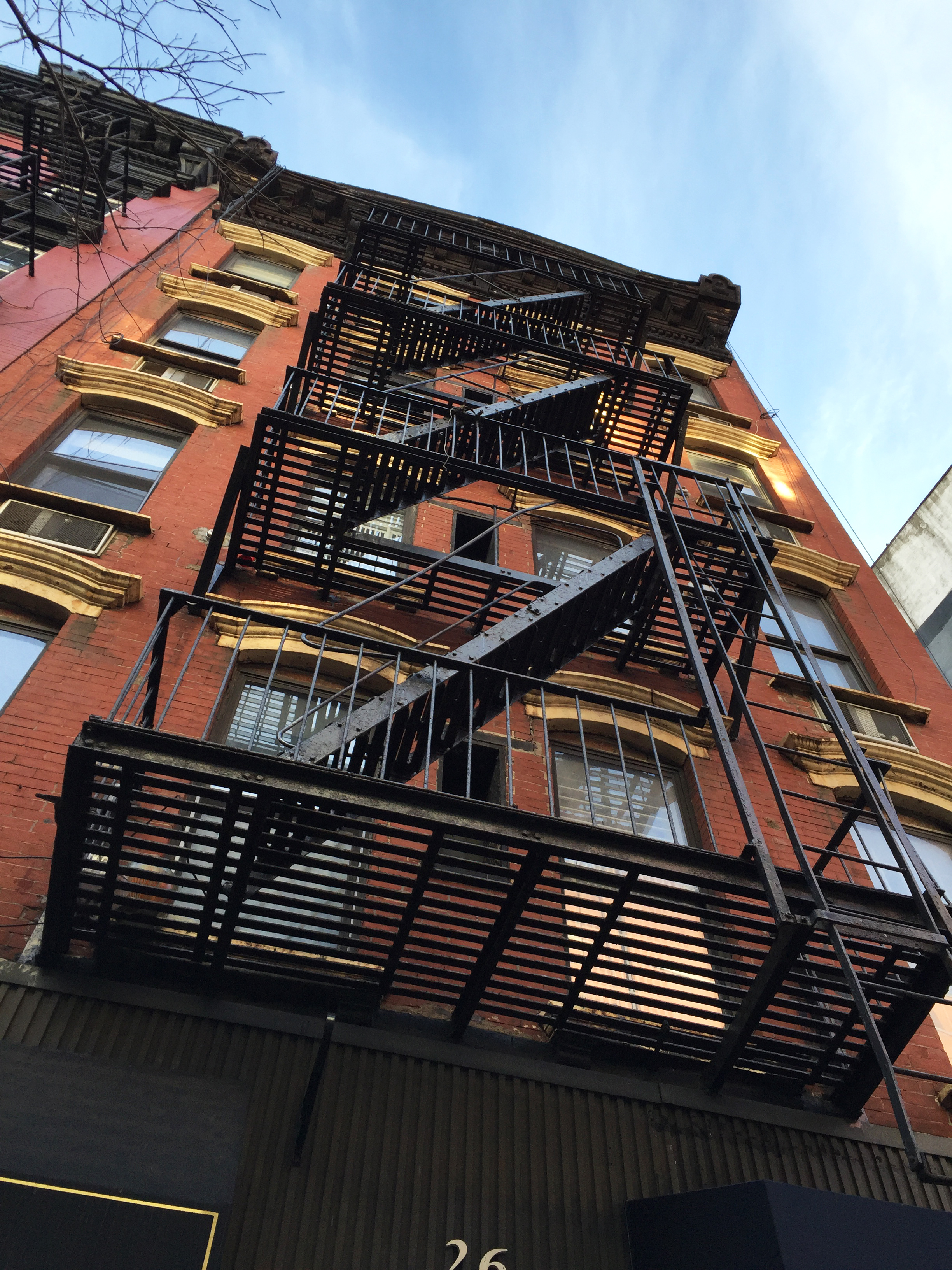
The one prominent feature that varied between the systems were the stairs. Some of the stairs were a lot steeper while others were on a more natural 45 degree angle.
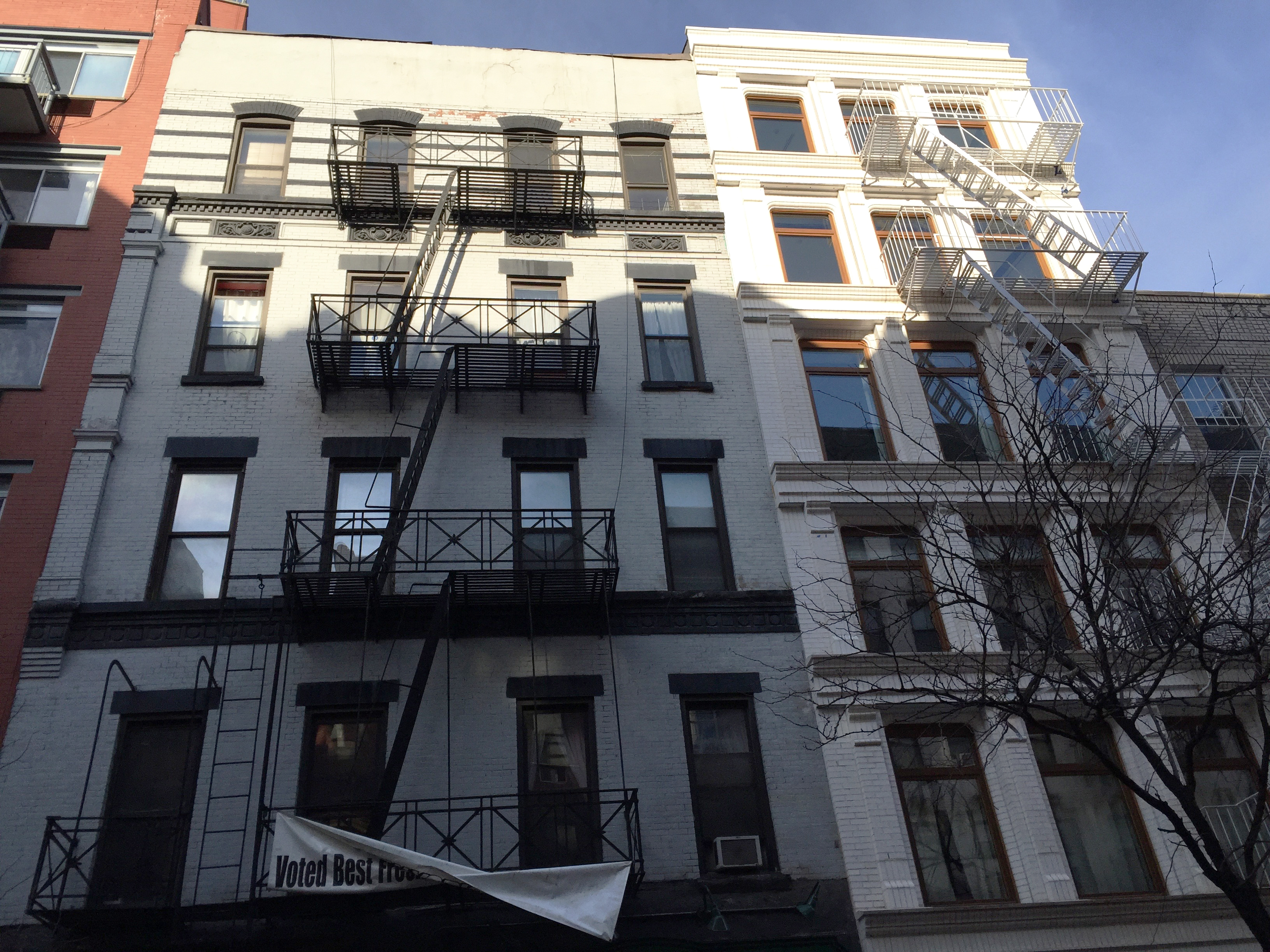
While walking down the streets it had occurred to me that a lot of the fire escapes were only alongside one column of the buildings.
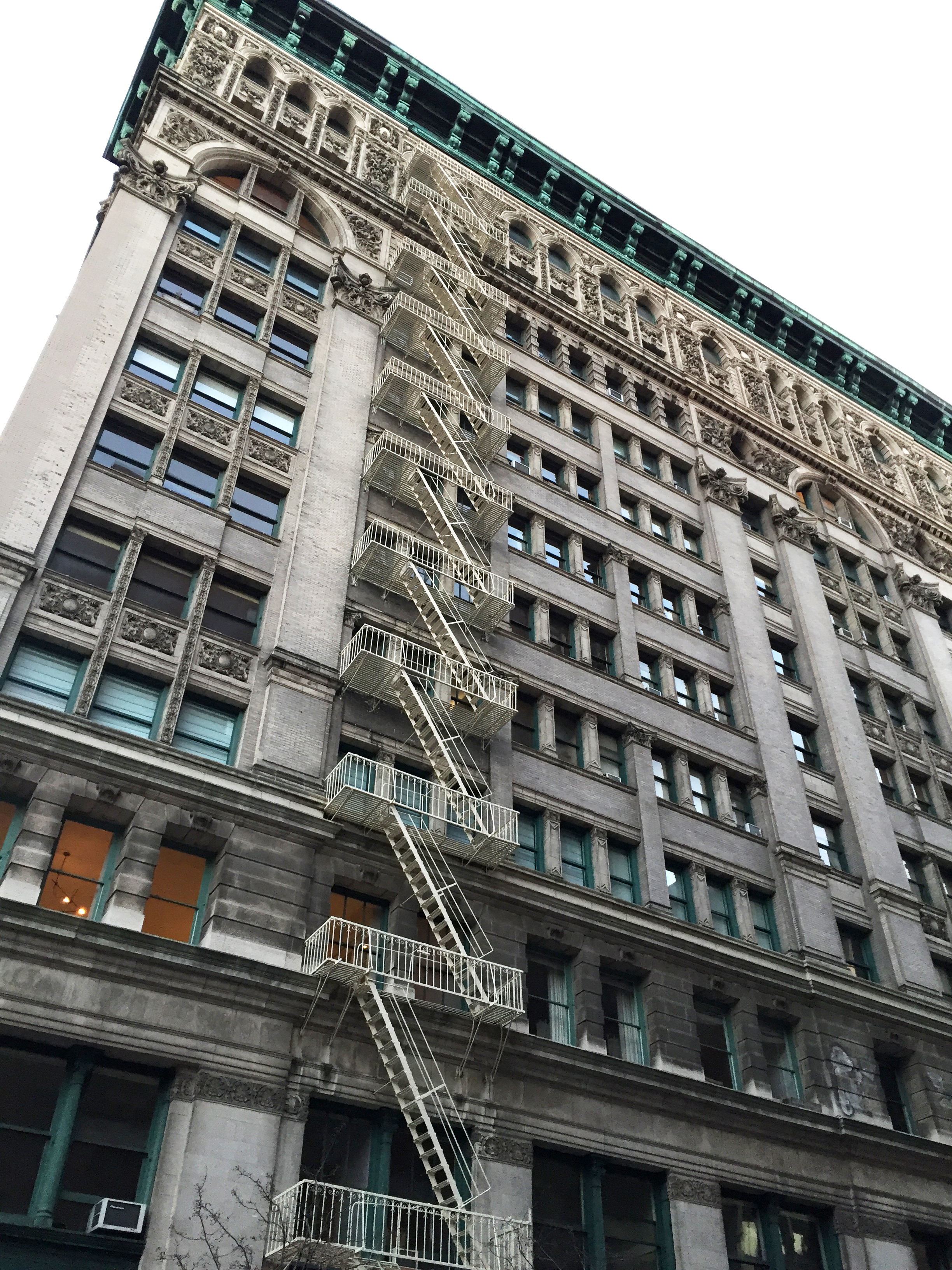
Realistically, there should be fire escapes outside of every window or at least one window for each room so that in case of a fire every room would be able to exit. There was one fire escape in particular that really intrigued me.

The fire escape went across two adjacent buildings connecting them. This would be convenient if the people living in each of the connecting rooms knew each other; the fire escape would act as an outdoor bridge to the other person’s house.
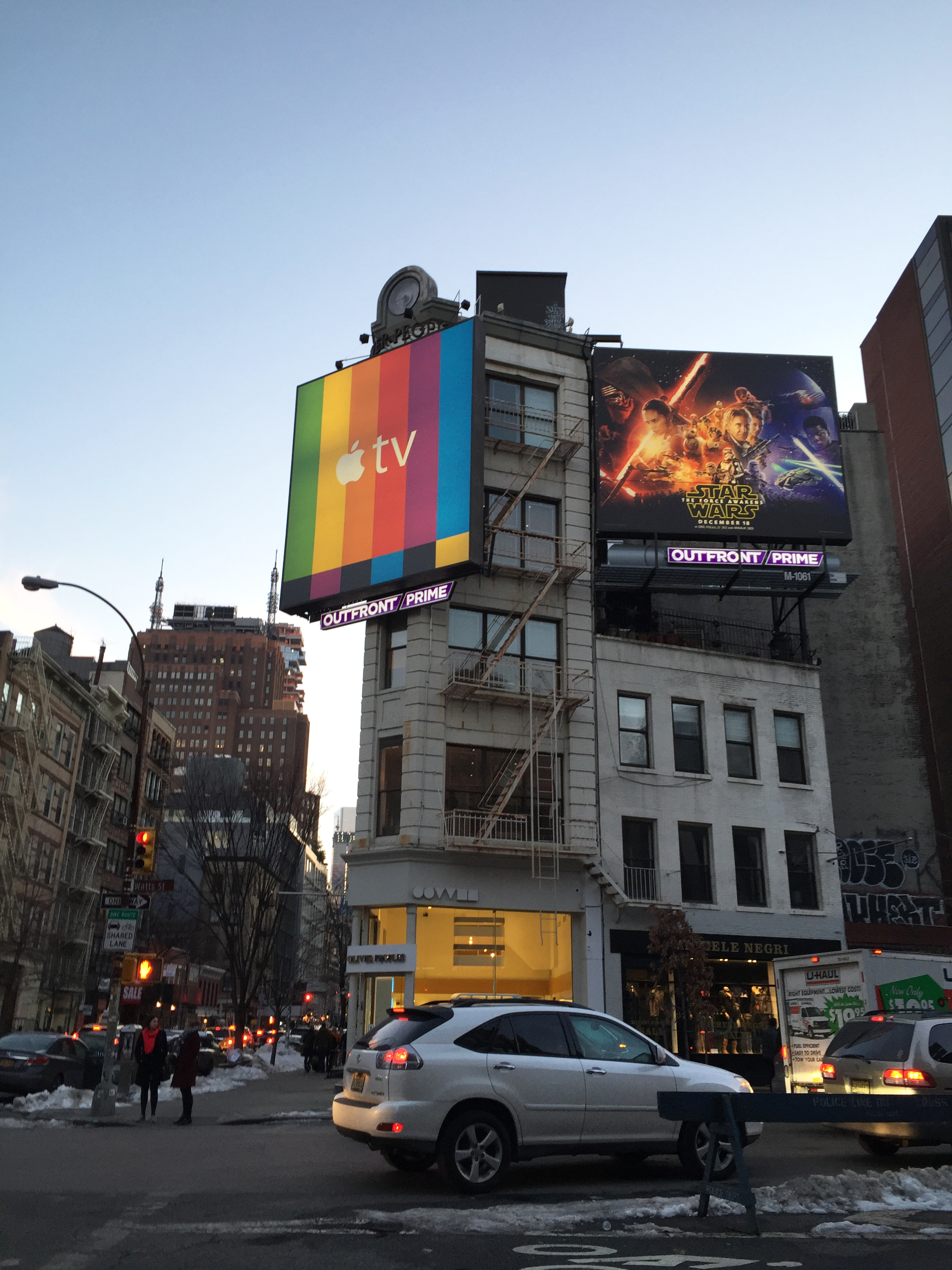
One of the really obvious flaws in design for these fire escapes were that many of them didn’t have a ladder at the bottom that reached further towards the ground. Many of the fire escapes ended at the second story; if a person were to climb down they would be forced to jump from at least ten feet above the ground which is pretty high and potentially dangerous.
